Types of washing machine motors
 The key element in a washing machine is the electric motor: it is the one that spins the drum, starting the entire system. It is logical that the nature of the machine’s operation will depend on the engine: spin speed, service life, level of emanating noise and vibration. And the more reliable and advanced the engine, the more durable, effective and comfortable the wash. Let's look at what types of washing machine engines are more common and how they differ from each other. Here are the characteristics, advantages and disadvantages of each of them.
The key element in a washing machine is the electric motor: it is the one that spins the drum, starting the entire system. It is logical that the nature of the machine’s operation will depend on the engine: spin speed, service life, level of emanating noise and vibration. And the more reliable and advanced the engine, the more durable, effective and comfortable the wash. Let's look at what types of washing machine engines are more common and how they differ from each other. Here are the characteristics, advantages and disadvantages of each of them.
The most common electric motor
Of the types of motors found, the most common is the commutator. More precisely, the motor is called a brush-commutator unit and consists of a movable rotor, a static stator, electric brushes and lamellas. The system operates due to a sequential reaction on the winding when an electric current is supplied. In short, the commutator motor works as follows:
- electric current is supplied to the graphite brushes adjacent to the lamellas;
- a magnetic field is created;
- through the lamellas, the voltage from the brushes is transmitted to the rotor and stator;
- the rotor begins to rotate, gradually picking up the speed specified by the program;
- the impulse is transmitted to the shaft;
- The washing drum spins up.
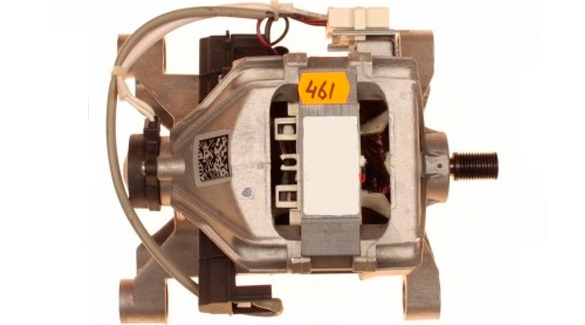
The collector is located in the lower part of the housing under the washing tub. To transmit the accumulated speed from the engine to the drum shaft, a drive is provided - pulleys and a drive belt. As soon as the motor accelerates, the “wheels” spin due to the rubber band, transferring the impulse to the drum.
The commutator motor is durable, accessible and inexpensive to repair.
A standard commutator motor has a number of advantages:
- simple and reliable mechanism, which makes the engine durable;
- affordable price, which reduces the cost of the machine;
- inexpensive and easy maintenance and repair.
The collector also has disadvantages. The main one is the high noise level due to the presence of brushes, which are constantly rubbed against the metal body of the motor. This leads to the second “minus”: graphite tips wear out over time and need to be replaced.
Asynchronous electric motor
A non-synchronous electric motor is also based on a stator and a rotor. The first remains motionless and acts as a magnetic circuit, and the second reacts to the created magnetic field, begins to rotate and spins the washing drum. However, during the process, the motor cannot synchronize with the speed of the magnets and moves slightly behind them. This is where the name “asynchronous” comes from.
There are two types of asynchronous motors on washing machines: two- and three-phase. Since 2000, the latter have almost completely replaced the former due to their compactness and greater power.
"Asynchronous" have the following advantages:
- simple motor design that rarely fails;
- high maintainability (due to accessible and cheap components);
- low engine cost;
- relatively low noise.
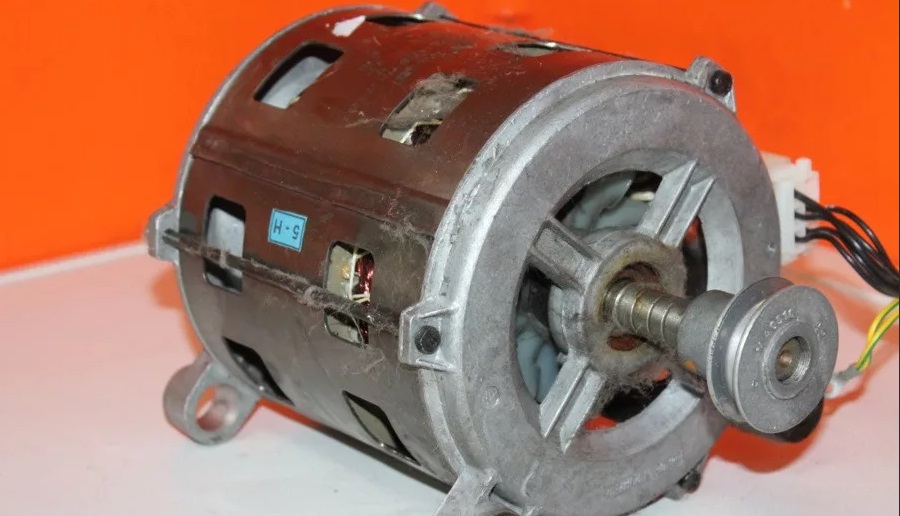
As for the disadvantages, the main one is the large size of the motor, which does not allow the use of asynchronous in compact and narrow machines. Also, the disadvantages include the need for periodic repairs of the system: lubricating the pistons and replacing bearings. Such engines do not shine with efficiency due to low efficiency and complex control of electrical circuits.
Asynchronous electric motors are found only in budget models with low power, small capacity and limited functionality. Otherwise, the motor will not cope with the load.
Inverter system motor
The most modern is the inverter motor. It was invented and put into production back in the 2010s, but even now it remains head and shoulders above its competitors. The whole trick is in the inverter - a converter that is capable of changing the frequency of the voltage from an alternating state to a constant one. Thanks to this ability, it does not depend on the electrical network and is able to control the speed it gains.
The technical name of an inverter electric motor is a three-phase brushless DC motor. The main components remain the same: a winding, a movable rotor and a static stator with magnetic cores. Such washing machines also have direct drive – the company’s development LG – connection of the engine directly to the drum, without electric brushes and belt drive.
Now Direct Drive technology, direct drive, together with a brushless motor, is found not only on washing machines from LG. The idea was adopted by other leading brands of large household appliances, for example, Samsung, Hotpoint-Ariston, Siemens, Bosch and Whirlpool.
It is believed that inverters are many times better than collectors and asynchronous motors. Manufacturers and consumers note the many advantages of direct drive: from compactness and noiselessness to durability and efficiency. But is it? Let's look at the main arguments in favor.
- “Inverter machines are compact.” Inverter motors, unlike their competitors, have reduced dimensions, but this is a small difference in the scale of the entire washing machine.The main place in the body is occupied by the drum, especially with its capacity of 6 kg. The absence of pulleys and belt drive frees up space, but a maximum of 3-5 cm in width and depth.
Direct Drive technology makes the washing machine more compact, reliable, and silent.
- “Motors without rubbing parts are more durable.” Yes, inverter engines do not have electric brushes, the graphite tips of which wear off due to constant friction against the commutator. This allows you to avoid periodic worries with replacing “coals”, making the inverter simpler and more reliable to operate. However, we must not forget about the bearings - they are there, and they can also break due to improper use of the machine.
- "The inverter is silent." Compared to brushed motors, which vibrate strongly and “hiss” due to brush abrasion, inverters are practically “silent”. But we can’t talk about absolute “silence” - the mechanism hums slightly during operation. The noise level can be compared to the beeping of a trolleybus. However, there is much less vibration here, so direct drive machines are quieter, do not shake or jump around the room.
- “There are significant energy savings.” As a rule, cars with an inverter engine are declared class “A+++” - the lowest of the existing ones. The advanced technology saves about 15% of energy consumption. We are talking about stabilizing the speed, at which the machine adapts to the loading of the drum, without wasting electricity.
The main disadvantage of inverter motors is the high price. Their electrical circuits are complex to design, so they cannot be cheap.
Interesting:
Reader comments
- Share your opinion - leave a comment
Categories
Washing machine repair


For buyers

For users

Dishwasher

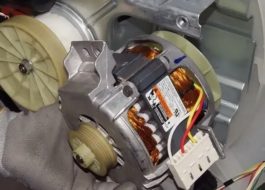
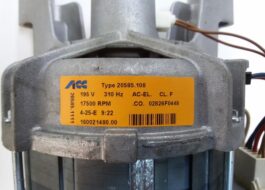

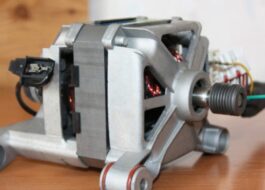












Add a comment